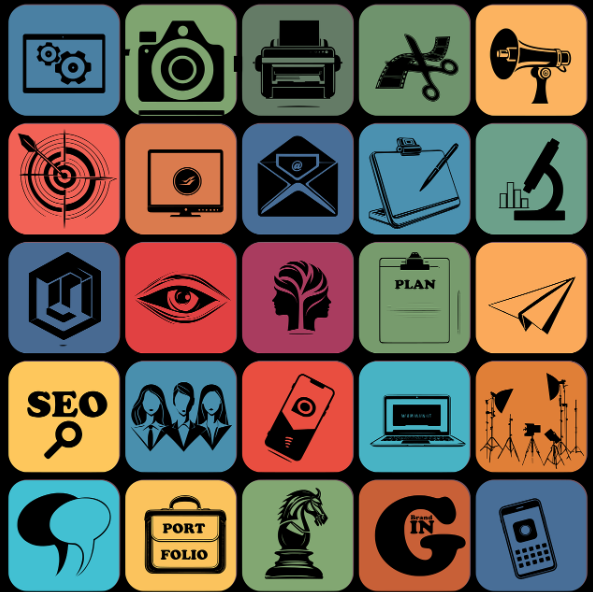
Choosing the right design software starts with a good understanding of what you actually need. You can’t just grab any program off the shelf and expect it to work magic. Different projects demand different tools, so it’s key to nail down your specific requirements first.
Think about the type of design work you plan to do. Are you focused on graphic design, web design, or maybe UI/UX design? Each of these fields has its own set of tools and necessities. Knowing where your focus lies helps narrow down the software choices.
Skill level matters too. If you’re a newbie, you might need something more user-friendly and intuitive. On the other hand, seasoned pros might prefer advanced software with a wide array of features and customization options.
Future scalability is something to keep in mind as well. Will your chosen software grow with you? As you take on more complex projects, you’ll want a program that can keep up. Some software out there offer expandable tools and features as you advance.
Budget is another biggie. High-end design software can cost a pretty penny, so it’s crucial to weigh whether the investment matches the value you’ll get. There are plenty of cost-effective or even free options that might do the job just as well for your current needs.
Key Features to Look for in Design Software
When shopping around for design software, focusing on the key features will help you make a smart choice. A user-friendly interface should be a top priority. After all, you don’t want to be stuck navigating through cluttered menus and hidden tools when creativity strikes.
Versatility is another crucial element. Look for a program that offers a wide range of tools to tackle different parts of your project. Whether it’s vector graphics, photo manipulation, or page layout, having these tools in one place saves you time and hassle.
Integration with other software can be a game-changer. If you already use tools like Photoshop or Sketch, choosing software that works seamlessly with them makes your workflow smoother. Also, check if it supports popular plugins and third-party extensions.
Support and community resources provide a safety net when you’re stuck on a problem. Strong customer support and a vibrant community forum can save you a lot of time. Tutorials, frequently asked questions (FAQs), and user-generated content, like templates and asset libraries, add even more value.
Lastly, flexibility in file formats isn’t just convenient—it’s essential. Whether you’re sending your designs to a printer, a web developer, or another designer, you need to ensure your software supports a range of file types. It prevents any last-minute hiccups and makes collaboration easier.
Popular Design Software Options Reviewed
In the world of design software, a few names tend to come up over and over again. Let’s break down some of the most popular options and what they bring to the table.
Adobe Creative Suite is like the Swiss Army knife of design tools. With applications like Photoshop, Illustrator, and InDesign, it covers a wide range of design needs. The downside? It can be a bit pricey, especially if you need multiple apps.
Sketch is a favorite among web and UI/UX designers. It’s intuitive and specifically designed for digital design projects. However, it’s only available for Mac users, which can be a dealbreaker for some.
Figma takes collaboration to the next level. Because it’s browser-based, teams can work on the same project simultaneously, no matter where they are. It’s fantastic for collaboration, but it may require a stable internet connection for the best performance.
There are also strong contenders like CorelDRAW and Affinity Designer. CorelDRAW is especially popular among graphic designers and illustrators because of its vector editing capabilities. Affinity Designer offers a lot of the same features as Adobe Illustrator but at a one-time purchase price, making it more budget-friendly.
User testimonials and online reviews provide a wealth of information. Hearing from real designers about their experiences can help you understand the pros and cons you might not find in official descriptions.
Making the Final Decision
Trying out software through trial periods or free versions is a smart move before committing to a purchase. Most reputable design software offers a limited-time trial or a free version with basic features. This hands-on experience will give you a clear idea if the software suits what you’re looking for.
Evaluating long-term benefits can outweigh the initial cost. Take time to consider whether the software will support your needs as you grow and take on more advanced projects. A higher upfront cost might be justified if the software provides lasting value.
Advice from experienced designers can be a goldmine. Connecting with seasoned pros who’ve worked with various tools can offer insights you won’t find in product descriptions. Whether through online communities or local meetups, picking a designer’s brain can guide you toward the right choice.
Balancing features with cost is always a tricky act. Make sure you’re not paying for features you’ll never use or skimping on vital tools that could make your work easier and more efficient. List out what features are essential for you, and use that as your compass.
Before making any purchase, double-check your final checklist. Ensure the software covers all your needs, from project type to budget and scalability. With your checklist complete, you’re ready to make a confident, well-informed decision.
